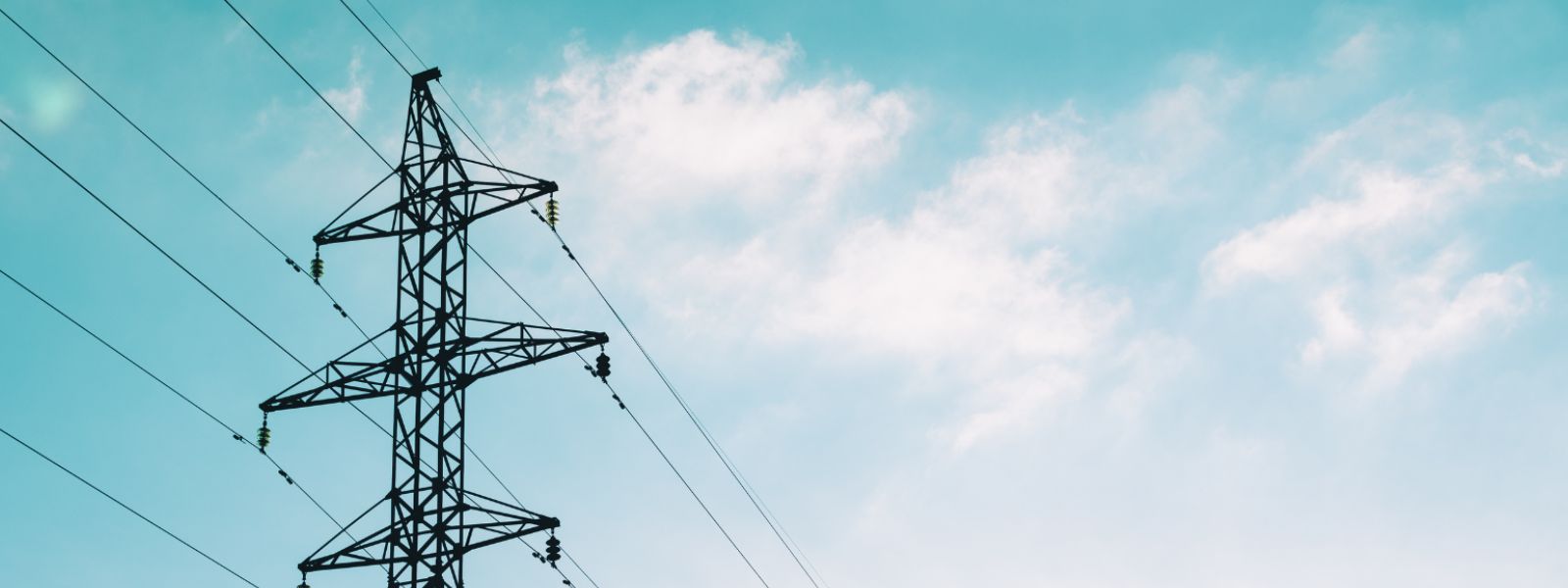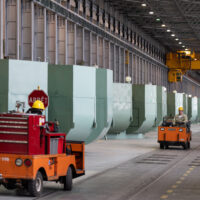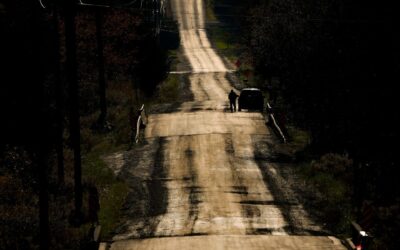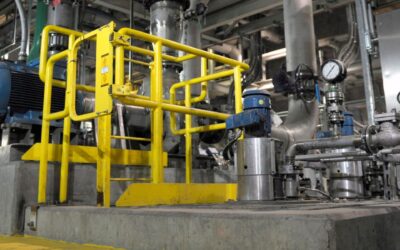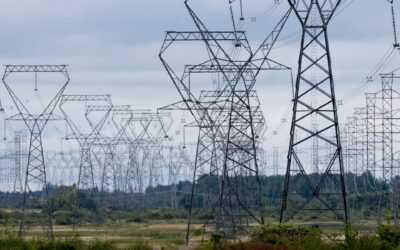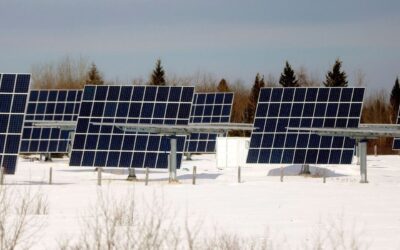To keep pace with accelerating electricity demands, Canada’s clean energy sector will need to grow substantially in the coming years. Yet, Canada has a deep legacy of building energy infrastructure and developing projects on Indigenous lands without inclusion or consent of the communities living there. Despite these colonial legacies of exclusion, collectively, Indigenous communities and enterprises are the largest asset owners of clean energy outside of Crown and private utilities.
It’s in this context of leadership that the Canadian Climate Institute and the Indigenous Power Coalition co-hosted a webinar earlier this month highlighting Indigenous-led electricity transmission projects in Canada. The discussions focused on the policy changes needed to strengthen Indigenous participation and leadership. The conversation was moderated by Frank Busch and included panelists Margaret Kenequanash, Kahsennenhawe Sky-Deer, and Blaise Fontaine.
The conversation comes at a critical time for Canada’s energy future. Clean power is needed more than ever as governments across the country search for new economic opportunities in a changing trade environment. But many of these efforts risk bypassing critical opportunities for Indigenous ownership that this evolving environment presents. The panelists shared powerful insights on why Indigenous leadership in transmission projects is essential to the energy transition.
While the panel reflected First Nations perspectives, these insights and the need for Indigenous leadership applies broadly, including Métis and Inuit communities.
Here are some of the insights that came from the conversation:
Insight 1: Indigenous Peoples are driving transformative change on transmission projects
Rather than being consulted after projects are initiated, many Indigenous communities are driving transmission projects, setting the terms of engagement, and selecting development partners on their own terms. The Wataynikaneyap (Watay) Power project and Hertel-New York Interconnection Line (Hertel Line) project are both powerful examples of this transformation. When Indigenous communities lead, projects are stronger.
Panelists highlighted that bringing Indigenous worldviews into project development contributes to success, and stressed that when transmission lines cross Indigenous homelands, there must be space for co-ownership and leadership.
“There is a genuine appetite for Indigenous communities to not just own transmission projects but to also lead”. – Blaise Fontaine , Co-Founder of ProACTIVE Planning Inc. and Indigenous Power Coalition.
Increasingly, developers see Indigenous communities as true partners rather than “barriers.”
Insight 2: Indigenous-led projects involving multiple communities require upfront inter-community collaboration and a clear, shared mandate
Transmission projects often cross many territories and communities, making them complex undertakings. As panelist Blaise Fontaine noted, colonialism has historically divided Indigenous Peoples, but projects succeed when communities take the time to build relationships, set guiding principles, and agree on a shared mandate and vision.
The Watay Power project illustrates this clearly, involving 24 First Nations as equal partners working to connect 17 remote communities in Ontario to the grid. Leaders spent five years meeting among themselves to decide on guiding principles and establish one voice. Panelist Margaret Kenequanash emphasized that communities must fully understand what they are getting into, since it is their homelands that will be impacted.
Insight 3: Regulatory systems and policies are slowly adapting, but still present barriers
Regulatory frameworks have not kept pace with Indigenous leadership in transmission. The Hertel Line project required Quebec’s National Assembly to pass Bill 13, new legislation allowing Hydro-Québec to co-own the project with the Mohawk Council of Kahnawà:ke. Panelist Kahsennenhawe Sky-Deer emphasized that while that was a breakthrough, it underscored that true partnership and co-ownership still depends on one-off exceptions rather than standard policy. Hydro-Québec is now working on a blueprint for Indigenous partnerships, an important initiative that should become the norm. Panelists emphasized that governments need to think outside the box to avoid staying stuck in the status quo.
The Watay Power project faced similar barriers. It took five years of meetings with governments and the Ontario Energy Board before the Indigenous-led project was recognized as a provincial priority. Panelist Margaret Kenequanash stressed that communities need enabling policies to realize their vision of ownership, with agreements and partnerships grounded in that vision.
Insight 4: Financial readiness and supportive partnerships are unlocking new possibilities for Indigenous equity
Panelists emphasized that access to equity in transmission projects is expanding as governments and financial institutions begin to address historic barriers to Indigenous capital. Indigenous communities are leveraging federal and provincial support, including major capital commitments and loans, to reduce risk and support long-term ownership.
Institutional investors are also stepping up, exemplified by the partnership between Mohawk Council of Kahnawà:ke and Caisse de dépôt et placement du Québec, which offers tailored financing and strategic guidance to Indigenous communities interested in renewable energy infrastructure in Quebec.
While Indigenous interest in transmission ownership grows, deeper investment will depend on each council and community’s risk tolerance. This reflects an Indigenous worldview focused on building sustainable futures without leaving debt for the next generation.
Insight 5: Partnerships are demonstrating tangible not just transactional benefits
For projects to succeed, Indigenous communities must see the positive outcomes that come from ownership. Panelists agreed that benefits must be defined by the vision of Indigenous communities and guide discussions with project developers. This vision emerges through meaningful engagement focused on how communities will be impacted in their homelands. Key questions include: what does training and employment look like to support community growth and capacity? What specific long-term needs and priorities does the community have? Hydro-Québec understood these community needs for the Hertel transmission line and responded by translating a community-led vision into tangible support—a $10 million contribution to the Kahnawake Cultural Arts Center.
Insight 6: True equity means meaningful decision-making power and control, not just a percentage stake
True equity has long been a point of contention for Indigenous communities partnering on renewable energy infrastructure projects. Indigenous communities have engaged in multiple rounds of negotiation to address historic injustices with developers. While equity ownership is increasingly offered from the outset, genuine equity goes further and includes influence over project governance. As Blaise Fontaine highlighted, Indigenous communities are reclaiming power not just through ownership, but by setting the terms around project routing, engagement, and environmental mitigation and impact, consistent with their worldview of balance and protection of the land.
Indigenous leadership needs to be at the heart of Canada’s energy transition
Meeting growing demands for power as the economy electrifies will require Canada’s clean power sector to grow significantly over the coming years. Indigenous leadership needs to be at the heart of this energy transition.
To meet Canada’s climate goals and build equitable energy systems, transmission policies must evolve to both enable and expand Indigenous-led transmission projects, supporting the meaningful participation of Indigenous communities as rights holders, decision-makers and co-owners.
This is also a pivotal moment for Indigenous leadership, as Canada shifts toward building east–west interties, trading power across provincial borders rather than only north–south into the United States. Panelist Blaise Fontaine highlighted that this shift opens even greater opportunities for Indigenous-led transmission.
We raise our hands to the past and present Indigenous leadership that have carried, and continue to carry, transmission and energy projects forward. As we approach National Truth and Reconciliation Day, we invite everyone to reflect on the barriers that remain, but also on the immense opportunities ahead for Canada’s electrification journey and for reconciliation, if carried out in a good way.
You can watch the full webinar below.

